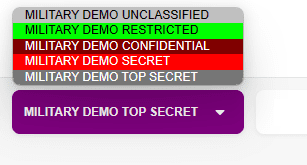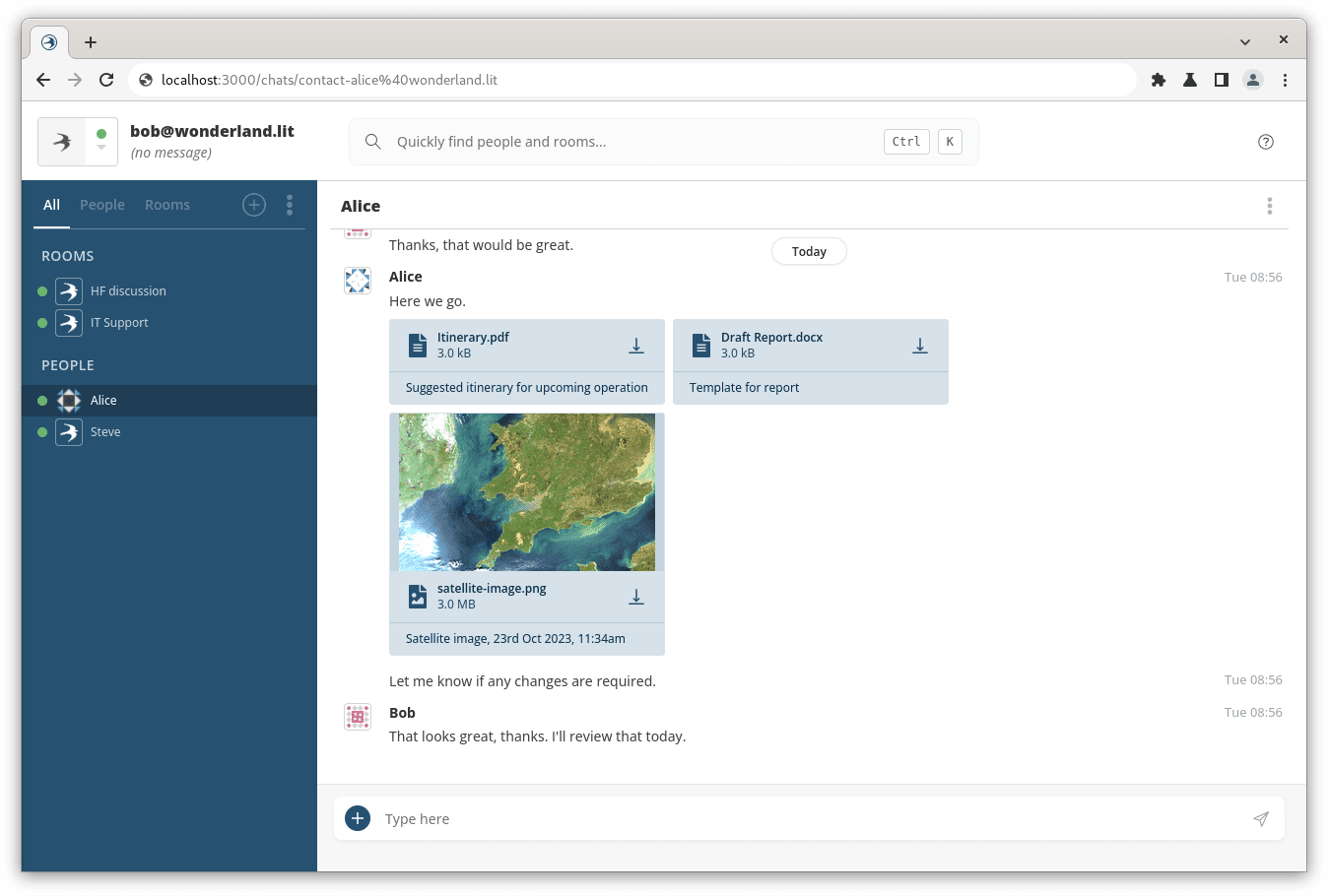Highlights and Insights from XMPP Solution Day 2025

In today’s world, secure communication is critical, especially for military operations and defence organisations where reliability, real-time communication, and security are important. At Isode, we recognise this need and have developed solutions based on XMPP (Extensible Messaging and Presence Protocol) technology to meet these challenges head-on.
On the 8th October 2025, we hosted our XMPP Solution Day at the Anglers, Teddington Lock. This event brought together industry experts to connect, exchange insights and explore Isode’s XMPP products. It was an incredible day filled with knowledge, laughter and lots of questions.
What is XMPP and why does it matter?
XMPP (Extensible Messaging and Presence Protocol) is an open-standard messaging protocol that enables secure, real-time communication between users and systems. Originally developed for instant messaging, XMPP has evolved into a reliable foundation for military and defence communications. It offers robust security features, including encryption and authentication, as well as proven interoperability between different systems and organisations. Additionally, it provides network flexibility that works across various connection types.
What we got up to:
Our Current Product Capabilities
The day began with live product demos led by Mark Timberlake, Head of Customer Service. Mark showcased how our XMPP Client, Swift, and products in the M-Link XMPP Server family (M-Link User Server, M-Link for Mobile Units, M-Link IRC Gateway, and M-Link Edge) work to deliver seamless, secure communication across any environment.
- Swift is a modern web-based XMPP chat client, designed to be used anywhere, on any device. Built on open-standard XMPP protocols, Swift enables real-time secure communication between users.
M-Link Server family – provides secure instant messaging solutions that can fit into any existing network that you have running.
- M-Link User Server is our core Instant Messaging and Presence server based on the XMPP standard. It provides secure, reliable, and scalable support for 1:1 chat, multi-user chat (MUC), Personal Eventing (PEP), and other XMPP services, making it ideal for both specialised and large-scale public deployments.
- M-Link IRC Gateway connects IRC and XMPP servers by linking IRC channels with XMPP Multi-User Chat (MUC) rooms. It allows both IRC and XMPP users to communicate seamlessly, managing shared connections and ensuring efficient message delivery between the two systems.
- M-Link for Mobile Units is designed to optimize XMPP communication over challenging networks such as SatCom and HF Radio, which often suffer from high latency and variable quality. It comes in two configurations: M-Link MU Server, deployed on mobile platforms like ships or aircraft to support local XMPP clients under constrained conditions, and M-Link MU Gateway, which bridges communications between high-quality and limited networks using specialized XMPP protocols (XEP-0361 and XEP-0365) to ensure reliable, integrated messaging across all environments.
- M-Link Edge is an XMPP boundary guard that protects organisational boundaries and provides cross-domain services. It can validate, constrain, and transform the XMPP messages it handles. M-Link Edge enables boundary controls to be completely independent of the core XMPP service and, as a boundary service provided by M-Link Edge, can support multiple XMPP servers within an organisation.
Our top feature highlights:
Security Labels
This is a feature that is critical for military and government deployments. Swift supports XEP-0258 “Security Labels in XMPP”. Used in conjunction with an XMPP server like our M-Link, it enforces access control based on clearance levels. In 1:1 chats or multi-user chat (MUC) rooms, you can set and view security labels clearly, ensuring messages are correctly classified while keeping the user interface clutter-free.

HTTP File Upload
This approach is recommended to be used when sharing files between multiple users in a multi-user chat (MUC) room. It uses the HTTP upload mechanism specified in “XEP-0363”. HTTP File upload allows an XMPP client to negotiate a “slot” on a server associated with the XMPP server, where it can publish a file, which is assigned a URL (web reference) that can generally be accessed. Functionally, this is like the XMPP client publishing a file on a special website. Then you’re able to share the URL with XMPP recipients, who can then download the file.

Military Forms
This is important for military operations, as it’s a quick and structured way to share information with a large number of users. Through Swift, you can easily share customisable templated forms in your MUC rooms and with third-party chat clients

Data-Centric Security
One of the most anticipated talks was from Isode’s CEO, Steve Kille, on Data Centric Security. Data-centric security means that access to data is controlled by the data. It contrasts with Network Centric Security, where access to a network gives access to data. DCS is seen as vital protection for a modern, secure network. The broad DCS concept is that access to every piece of data is controlled, and people need to ask for permission to access it, rather than access being given freely.
Key takeaways included:
- Integration with NATO STANAG 4774 & 4778, defining how confidentiality labels and metadata binding secure messages.
- Demonstration of Swift prototypes supporting STANAG 4774/8 for labelled chat and message handling.
- Future support in M-Link for Access Control Enforcement, label mappings, and cross-domain conversions through M-Link Edge.
Steve also contrasted DCS with ACP-240, the 5-EYES standard based on the Zero Trust Data Format (ZTDF). While ACP-240 excels for secure document sharing, he highlighted that STANAG 4774/8 provides the best solution for message-level DCS in XMPP, offering practical interoperability for NATO and allied systems.
The afternoon session explored other XMPP implementations and NATO deployments. Steve Kille discussed how Openfire and JChat fit into the military XMPP ecosystem:
- JChat: A NATO-developed client supporting core military XMPP features and interoperability with Isode’s Swift and M-Link products.
- Openfire: While popular and open source, it lacks advanced security enforcement and scalability features found in M-Link, especially for cross-domain or constrained environments.
Isode’s role in NATO’s BRIPES and BRE1TA projects was also highlighted. These initiatives leverage Isode’s technology to modernise HF-based BRASS communications, bringing email, web, and XMPP services to ships and shore installations.
The XMPP Product Roadmap – Looking Ahead
Kevin Smith, VP of Engineering, shared our XMPP roadmap, discussing what’s next:
For Swift:
- Swift 6.2 is introducing Dark Mode, server-side preferences, and reactions.
- In-progress features include message threading, forwarding, SSO/OAuth, and delivery confirmations.
- Plans include spaces, message pinning, and enterprise-grade parity with consumer clients.
For M-Link:
- Version 19.4 is nearing completion with multi-admin support, GSSAPI/SSO, and protocol enhancements (XEP-0060, 0163, 0198, 0237).
- Future releases aim for multi-node clustering, enhanced archiving, OAuth user management, lower bandwidth optimisation, and a new IRC Gateway.
Kevin encouraged attendees to share feedback and deployment priorities to help shape Isode’s next phase of XMPP innovation.
Our XMPP Solution Day 2025 highlighted our commitment to open standards, interoperability, and secure defence communication. From cutting-edge DCS integration to advanced product capabilities, the event showcased how our XMPP technology continues to evolve to meet the complex communication needs of modern defence networks.
The day closed with great conversation and plenty of forward-looking enthusiasm. As one attendee summed it up: “It’s clear that Isode is not just building products, they’re defining the future of secure, interoperable communication.”
